Interview with Sandeep Sethi
A key activity here at B2E is to conduct welcome calls with our community of consultants – both when new consultants register with us and at various touch points during their careers. It’s always interesting speaking with our consultants about their previous engagements and their aspirations for their next assignments. Just before the Jubilee Bank Holiday weekend, I had the pleasure of chatting with one of our experienced consultants, Programme Test Manager Sandeep Sethi, who has worked on a couple of engagements with B2E and has just finished consulting for a large UK insurance client. He kindly agreed to be interviewed for our website, so that we can help other professionals thinking about making the move into independent consultancy to gain a better feel for operating in this way and what engaging through us at B2E Consulting is like.
Sandeep and I held the chat on camera on Teams from our respective work-from-home locations in West London and Bath, actively demonstrating the flexibility of hybrid / home working from the outset of our call whilst also getting nice views of each other’s gardens, which we agreed was such a benefit to personal wellbeing!
How did you come to hear about B2E Consulting?
Sandeep explained that he was referred to B2E from a previous boss when they were chatting about Sandeep’s plans. Sandeep explained that it was particularly nice to have an ex-boss make a recommendation showing that he must have thought very highly of the B2E team.
At B2E we really value recommendations and referrals from our network. In a professional space where reputation is critical, it’s beneficial to both to us, the consulting organisation, and to the consultant to have these referrals.
What is the process of applying for an opportunity like with B2E?
When we chatted through the applications process at B2E Sandeep said that it had been pretty smooth, but shared some very useful insights for how he thinks a consultant should ‘qualify’ the opportunity in any discussion in order to “hone in the on the nuts and bolts of personal suitability”. (We did have a few jokes about parallels with dating agencies!…) He personally likes to understand the sector, the flexibility (if any) in the engagement, key aspects such as is this an up-and-coming role or a recovery role or an established role etc. He wants to get a feel for what the engagement might be like and then understand the actual selection process. Sandeep said that B2E gave him good clear answers on the above, so he was properly able to assess the opportunity against what else he had in his pipeline.
What influenced you to become an independent consultant?
Sandeep explained that he has now been an independent consultant for almost 30 years. I was intrigued about whether this had always been the plan. But interestingly he said no! Whilst having started his career at Reuters and in investment banks he decided to give himself a real challenge about 3 years into his graduate programme and that was to:
- Change industry;
- Change country and
- Change his mode of working (i.e. moving from away from permanent)
…and he decided to try this all in one hit to see if this was possible as well as to challenge his own personal constraints. He was extremely successful – subsequently gaining a role at a Belgian telecoms company where he also made the move from software developer to release manager and tester, additionally changing from a permanent employee to contractor all in one go. Then soon after making this change there was a big build up to Y2K which brought with it a lot of opportunities for testing roles.
Since this jump, Sandeep has now worked for over 30 companies. I asked him whether he enjoyed the variety and change that working for 30 different companies has brought. He said it has been very enjoyable and interesting although he caveated that it can be hard to break into different sectors.
How can you break into different industry sectors as an interim?
Sandeep gave some excellent advice to consultants looking to highlight their strengths when moving into new industry – emphasising that you should research what is common in the new industry compared with where you have worked previously – there will be common challenges as well as common areas of work (e.g. challenges: there’s never enough time, there’s always more to do, team dynamics with suppliers can be challenging, winning the confidence of those working with etc. areas of work: always business analysis, product management, testing etc.) Then if the client is interested enough in your profile to meet you, that does mean they are potentially open to bringing outside experience in. It’s at this stage that you can self-market how your breadth of industry experience is valuable to their sector. Sandeep believes that every industry does certain key things exceptionally well, but this won’t be the same x things across all sectors. By bringing in alternative industry experience – you can position the things that your different industry does well, helping to open your target client’s eyes to other areas of improvement. Sandeep shared how this approach has enabled him to work across many different sectors including pharmaceuticals, manufacturing, media, insurance and pensions. By challenging the ‘commoditised’ approach to skills – he has been able to leverage his past experience and encourage clients to expand their thinking away from a solely industry focus when considering what resources they want on their projects. Then when you are on site – you can always tap into the experts.
What do you think are the professional advantages of being an interim?
Sandeep saw many benefits to being an interim consultant – notably exposure to extensive learning and different industries and experiences – as long as you are prepared to put in extra hours particularly in the first 4-6 weeks of the assignment. The first thing he always asks if he can have access to the internal knowledge base of the client.
Home / Hybrid Working – did you have much experience of working this way?
As I mentioned at the opening to this article both Sandeep and I work predominantly from home. Even prior to Covid and lockdowns, Sandeep worked this way – having consulted on a significant number of international assignments over the years. He explained that when you are established on your project and there’s good trust in delivery, time would be wasted flying to different countries. So instead, his presence on site was based on key timelines.
We discussed how to be successful in the hybrid model and he felt it was key to be conscious of others’ availability and time, with foresight needed when arranging meetings and the difficulty compared to just turning to the colleague seated next to you and asking and the lengthy process of negotiation when you need lots of people to attend. We discussed the benefits of sharing high level information from Outlook calendars – just time and maybe title – so that you can see when it might be possible to meet. This is more difficult with external suppliers – but an ideal would be to come up with an agreement where you can see high level information / free slots. Sandeep said that Microsoft do allow publication of calendars with rudimentary info but not many do it… he would love to see that creation of efficiency which could save hours of lost time every year organising and rearranging meetings.
How do you manage the personal and work like balance?
We then chatted about maintaining work/life balance in the hybrid model. Sandeep explained he saw one advantage of working from home is the balance you can strike between the personal meetings that come up in work time that you cannot avoid (the dentists, the drs). His approach is to book these out in his calendar with a simple note that he away and what for to give comfort to his team. The added advantage is that he can keep a tally of any of this personal time, ensuring that it is balanced off against working hours in an open and transparent way. He pings his colleagues if he is going to be away – lets them know what for and gives his mobile number. He said this was good team courtesy and thinking about others’ time too and if he behaved in this way – others might too. Another approach for getting the best of out the day is to work in multiple locations around the house which is believes is more conducive to thinking differently. At the end of the working day, he puts his laptop physically away so can’t be seen, else there’s the danger that work is sat there – always the reminder. Furthermore, Sandeep hasn’t put mobile access to work on his personal mobile phone as he thinks this creates too much of a draw back to work when checking personal messages. He also talked about some other things organisations can do to support this balance – for example Microsoft products now come with intelligent features which can prompt the sender if they would prefer to send something the next morning when a colleague is back at their desk, rather than send an evening email.
And finally, what do you particularly enjoy about roles in testing?
I was interested to understand what Sandeep enjoys about his work. He explained that he has a real passion for things being right and finding out as early as possible if they’re not right. And so, once you start to do that well, the next stage is to identify how those things started going wrong in the first place – because the most effective thing to do is to prevent problems. We chatted about how human misunderstandings are most often the cause. You can have a group of people in room where words become misunderstood which naturally leads to problems in the future time and wasted energy for the team. He thinks the solution to prevent this from growing is to articulate misunderstanding, encourage dialogue, be clear on terminology, capture the details and be consistent. Organisational and team culture also has a role to play – where people are too polite, feel they are too junior or perhaps it’s not their job to point out the misunderstanding. Sandeep is clear to clients – he will bring bad news early, don’t judge him personally or professionally on that – the benefits will be in addressing the problem quickly and avoiding negative impacts for example to customers or with regulators. In reviewing these problems openly, the risks can be properly assessed and how they stack against other issues – if it’s not too bad the team can move onto something else that needs more attention. That’s what you do in testing – defining problems, grading them and deciding which to pursue.
Nicola Smith
Partner









